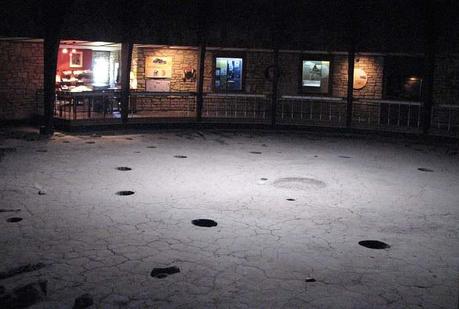Not long ago I was having an enriching dinner conversation with Stewart Guthrie, former Chair of the Fordham University Anthropology Department and author of Faces in the Clouds: A New Theory of Religion (1993), a seminal book in modern evolutionary religious studies. Naturally, we were discussing his theory that religion arises from our strong cognitive tendency to anthropomorphize. Because human agents, both real and imagined, are central to this theory, I observed that anthropomorphic agents and agency are not always foundational to thought-action systems that are often characterized as “religious.”
As examples, I pointed to Native American hunter-gatherers whose cosmological conceptions are oriented around the idea that the world is suffused with inchoate “power” and that such power is non-human, incorporeal, and non-intentional. This power, often glossed as a “great mystery,” is never fully understood, grasped, manifest, or controlled. It is a force or energy that flows, permeates all that is, and which constitutes all things. The Lakota know it as wakan, the Crow as maxpe, the Shoshoni as puha, and many Algonkian tribes as manitou. In this post on the kinetic nature of animist worldviews, I discussed it in more detail.
Most of my examples were drawn from nomadic hunter-gatherers, although many Algonkian tribes (especially those east of the Mississippi) were village horticulturalists first and hunters second. While recently reading Preston Holder’s classic, The Hoe and the Horse on the Plains: A Study of Cultural Development among North American Indians (Landmark Edition) (1970), I came across these passages which bear on the discussion:
The Pawnee and Arikara village bundles were the basis for the control and production and social relations within villages. The bundle itself was a skin envelope enclosing physical symbols which were used as devices for the recall of complex elements of religious ideology and ritual (42).
The continuing life of the village was guaranteed by powers within the bundle, forces derived from a pervasive ocean-of-power investing the universe. The idea is exemplified by the Pawnee term tirawahut, so often translated as “God” or “Heaven.” A close etymological analysis indicates a meaning nearer to “this which expands” or “this expanse.” In this light we can more easily understand the comment offered by the Skiri White Man Chief on being shown the endless expanse of the Atlantic ocean: “It was like God” (43).
Regardless of these interpretations, the idea of an incorporeal power surcharging the universe was present…especially in connection with bundle renewals, where it is often mentioned also as “Luck.” There is abundant reference to the same idea among the Arikaras (43, n.16).
It is often said, in the ethnographic literature, that “primitive” societies had no notion of luck or randomness and that everything was assigned an agentive or “superstitious” cause. Indigenes supposedly had no idea, akin to our own statistical ideas, that things can happen for no particular reason, or for probabilistic reasons that we do not really understand. We call this “bad luck” or “chance” — matters of being in the wrong place at the wrong time. As is apparent, these older ethnographic ideas (or prejudices) are incorrect: the Caddoan Pawnee and Arikara had similar ideas.
And speaking of the Pawnee and bundles, this past summer I visited the Pawnee Indian Museum and Historic Village Site in northern Kansas near the Nebraska border. It’s an impressive place, located in the lush Republican River valley, surrounded by gorgeous grasslands and rolling plains. The village site can clearly be seen and portions have been excavated. The large ceremonial structure was so archaeologically impressive that they built a museum right over the excavated floor. It’s one of the more beautiful settings and museums I’ve seen, made even more so by the presence of a sacred Pawnee Village bundle which has never been opened and cannot be photographed. With Pawnee songs being piped in the background, one feels the presence of mystery.

Interior of Pawnee Village Museum — Excavated Floor of Structure surrounded by Exhibits

